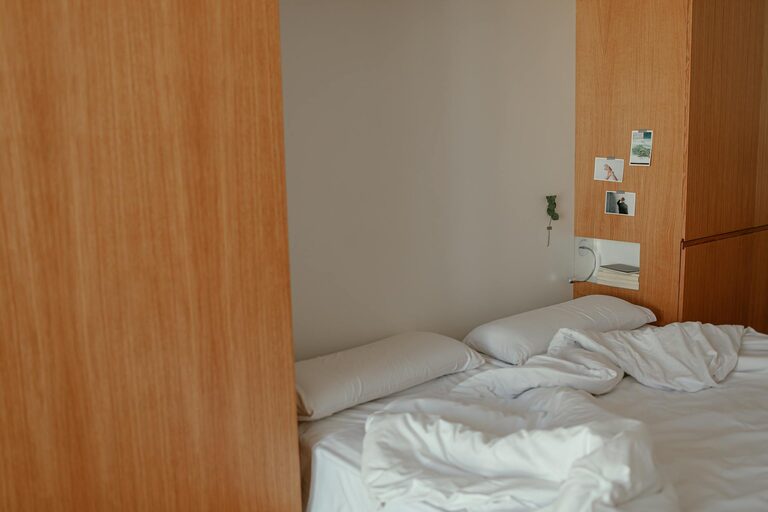Creating a home environment that feels calm and inviting starts with choosing the right colors. The colors we surround ourselves with can have a profound impact on our mood and energy levels. If you’re looking to design a space that promotes relaxation and tranquility, selecting calm colors is a great first step.
In this post, we’ll explore helpful tips for choosing calm colors for your home that suit your personality and lifestyle while creating a serene atmosphere.
Why Choose Calm Colors?
Calm colors tend to evoke feelings of peace, restfulness, and balance. Unlike bright or bold shades that energize the space, calm tones help reduce stress and create a soothing environment — perfect for areas where you want to unwind, such as bedrooms, living rooms, and reading nooks.
Common calm color families include soft blues, gentle greens, muted neutrals, and pale lavenders. However, it is important to consider personal preferences, lighting, and the room’s purpose when selecting colors.
Tips for Choosing Calm Colors for Your Home
1. Understand the Mood You Want to Set
Before picking a paint color, think about the mood you want to create in the room. For example:
– Restful and serene: Soft blues, light grays, and gentle greens are known for their calming effects.
– Warm and cozy: Warm neutrals like beige, soft taupe, or muted peach can create a comforting environment.
– Fresh and airy: Pale ivy greens or soft blues combine freshness with calmness.
Knowing the mood will help you narrow down color families and avoid overwhelming the space.
2. Start With a Neutral Base
Neutrals serve as a versatile foundation for any room. Shades of white, cream, light gray, and warm beige offer calmness and flexibility. You can easily add subtle color accents with furnishings, artwork, or textiles.
Neutral walls also make it easier to introduce natural elements like plants or wooden furniture, which further enhance relaxation.
3. Consider the Room’s Natural Lighting
Lighting plays a crucial role in how colors appear. Rooms with lots of natural sunlight might feel brighter with cooler calm tones like pale blues, while darker rooms can benefit from warmer calm colors to add warmth and prevent the space from feeling cold.
To see how a color looks in your space, test paint samples on the wall and observe them at different times of the day.
4. Use Color Psychology as a Guide
While personal preference should always come first, color psychology can offer insights:
– Blue: Associated with tranquility and calmness; great for bedrooms and bathrooms.
– Green: Symbolizes nature and balance; good for living rooms or offices.
– Lavender: A subtle purple that promotes relaxation.
– Soft Gray: Provides a modern, understated calmness suitable for multiple rooms.
Remember that the intensity matters; lighter, muted versions of these colors generally soothe better than bright or neon shades.
5. Incorporate Textures and Layers
Calmness is not only about color but also the texture and layering of materials. Soft fabrics, natural fibers, and matte finishes can enhance a calming atmosphere even more than color alone.
For example, a soft gray wall paired with cozy linen curtains and a wool rug can create a rich yet calming environment.
6. Balance Color With White Space
Using calm colors doesn’t mean every wall should be painted in subdued tones. Incorporate white or lighter shades to provide “breathing room” within the space. This helps prevent the room from feeling too dark or heavy.
Trim, ceilings, or furniture in crisp whites or light neutrals create balance and make the calm tones stand out positively.
7. Use Color Samples and Swatches
Always collect paint samples and fabric swatches before making big decisions. Seeing the colors in your own space against your lighting and furniture is key to feeling confident in your choice.
Many brands now offer printable swatches or sample pots that let you test the colors affordably.
Calm Color Palette Ideas for Different Rooms
Bedroom
Aim for restful colors like soft blues, pale greens, or gentle lavender. Pair with white bedding and natural wood furniture to create a peaceful retreat.
Living Room
Choose warm neutrals such as taupe or beige with accents of sage green or light gray. This combination encourages calm socializing and relaxation.
Bathroom
Whites and very light blues or soft seafoam greens work well to evoke cleanliness and tranquility.
Home Office
Soft greens and muted grays foster focus and calmness without distraction.
Final Thoughts
Choosing calm colors for your home is a wonderful way to craft a soothing, welcoming atmosphere. Remember to consider the room’s function, lighting, and your personal style. Don’t hesitate to experiment with samples and combine color with texture and natural elements for the best effect.
With thoughtful planning and attention to how colors interact with your space, you can enjoy a home that truly nurtures peace and relaxation every day. Happy decorating!

